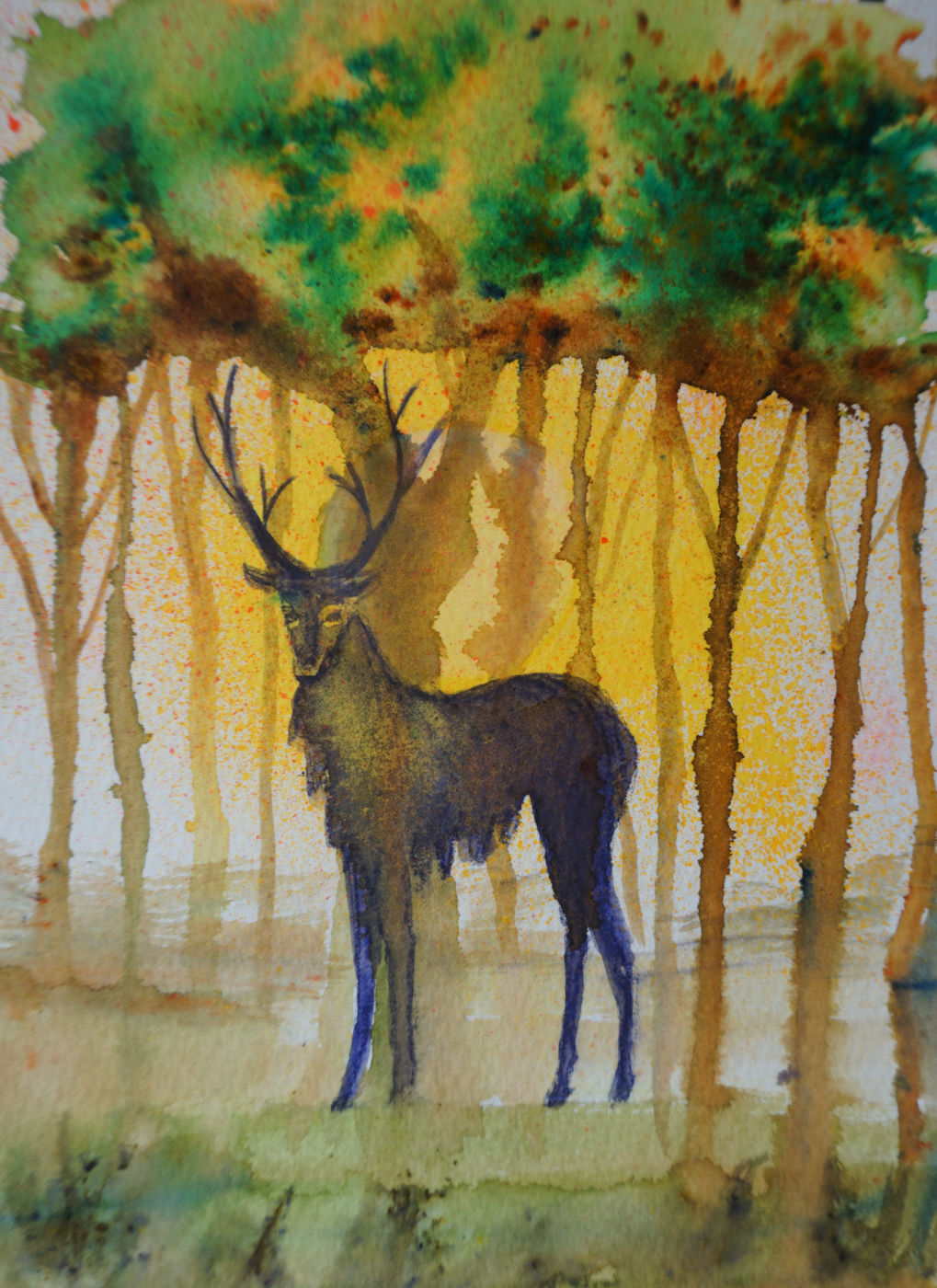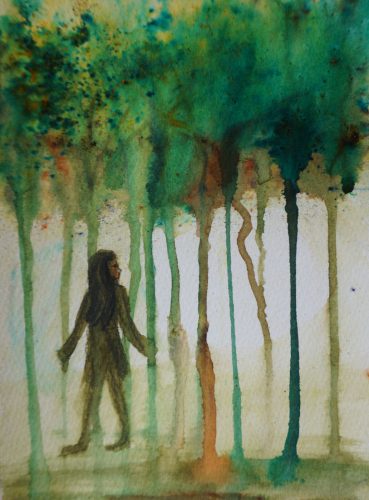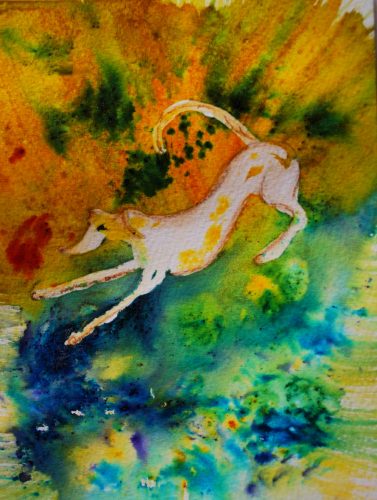I spent some time experimenting with dry Brusho watercolour pigment powder, ink pencils, and spray inks. The picture above was I think the most successful, but I thought I’d upload some of the other works to record how I approached them.
The painting with the deer, above, I started with light. I used a spray bottle of yellow ink to make a spot of yellow in the middle of my picture that faded to white all around, and then a very small spray of red ink around it to create a slight darkening/reddening around the edges. Once that was completely dry (vital so the ink would not run! Ink stays put once it’s dry (mostly) whereas watercolour can be re-wetted and will run and move more.)
I painted the top of the image with plain water, and added Leaf Green brusho pigment to the top of the wet area. Then I sprinked Moss Green and Sandstone pigment at the bottom of the wet area, stood the picture up vertically, and dripped water here and there so that the wet pigment ran in mingled streaks down across the dry yellow ink sunburst.
The painting below was created in the same way, but without the ink sunburst: this was my earlier draft. It’s still quite a pleasing thin forest, I think.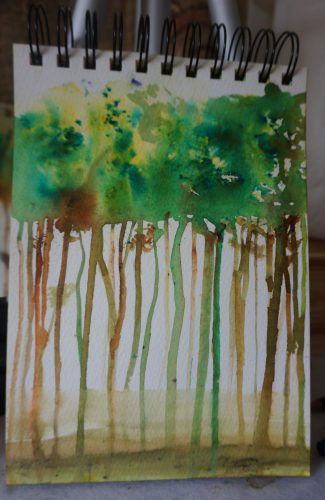
I love the way the Brusho pigment makes random patterns and speckles of light when applied to wet watercolour paper. (You do need a thick good quality watercolour paper for this kind of thing, so the paper doesn’t crinkle.)
I brushed the pigment across the bottom with a wet brush, just to create a foreground, and added a little more moss green foliage at the bottom.
Then, once the trees and grass were dry, the last step was to draw a deer. I used a purple Inktense pencil for that, and then carefully washed over it with water. This allowed some of the yellow ink to show through the purple layer, and re-wetting the Brusho trunks underneath the deer gave the purple a good varied colour so it sat well with the rest of the picture rather than looking stuck on.
I tried the same idea here, but without the yellow ink undercoat and with a figure instead of the deer, but it didn’t work quite so well.
Before I started playing with the idea of drips forming trees, I first tried them creating the under-water stems of water-lilies. I think this would have worked a little better if I had given the lilies a bit more space and drawn them out more carefully. 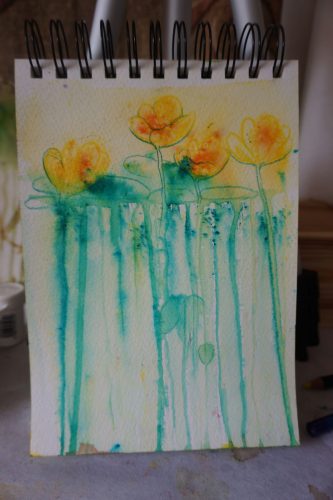 This was my first attempt at putting the Brusho colours onto wet watercolour paper, and then tilting the paper to make the pigments combine. It’s 100% abstract, but I rather like it. That’s how I ended up with the idea for the lilies.
This was my first attempt at putting the Brusho colours onto wet watercolour paper, and then tilting the paper to make the pigments combine. It’s 100% abstract, but I rather like it. That’s how I ended up with the idea for the lilies. 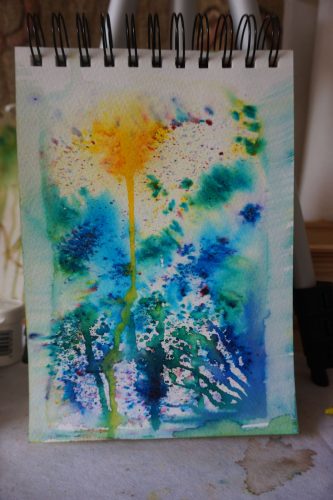
And finally (this post is all the wrong way around) this is the first picture I made in this session. I drew the dog first, using Inktense pencils, then I masked over her with a liquid rubber mask. Then once the mask was dry, I water-painted the whole thing and started applying a mix of dry brusho powder to see what would happen. What happened was quite colourful!

